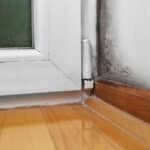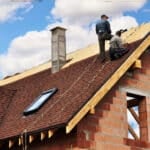Water damage can be a homeowner’s nightmare, leading to costly repairs and decreased property value. While most people are aware of common sources of water damage, such as leaking pipes, many homeowners overlook several crucial aspects that can contribute to water-related issues. We’ll shed light on some often-neglected areas that can be instrumental in preventing water damage, thus ensuring the longevity and integrity of your home.
Sealing Your Home
Sealing your home is a vital but often overlooked step in preventing water damage. Cracks and gaps in the walls, windows, doors, and foundation can allow water to seep into the house, leading to mold growth and structural damage. Regular inspection for any openings and sealing them with the appropriate materials such as caulking or weather stripping can effectively block water intrusion. It’s essential to pay attention to areas around plumbing, electrical outlets, and window frames, as these are common entry points for water. Proper sealing not only prevents water damage but also enhances energy efficiency by keeping the home insulated.
Gutters
The role of gutters in protecting your home from water damage cannot be overstated. Gutters channel rainwater away from the roof and foundation, but their effectiveness can be hampered if they are clogged with debris. Clogged gutters can cause water to overflow onto your roof, causing serious water damage. Regular cleaning and maintenance of gutters are essential to ensure that they function correctly. Installing gutter guards can be a proactive measure to prevent clogs. Monitoring downspouts to make sure that they direct water away from the foundation will further protect your home from potential water-related issues.
Lawn Grading
The grading of your lawn plays a significant role in preventing water damage, and it is often overlooked by homeowners. Incorrect grading can lead water towards the foundation of your home, causing flooding and erosion. Proper grading ensures that the landscape slopes away from the house, directing rainwater and melted snow to drainage areas. Consulting with landscaping professionals to assess and possibly regrade your lawn could be a wise investment in safeguarding your home against water damage. Plants and shrubs can be strategically placed to aid in controlling the flow of water, adding both functionality and aesthetics to your outdoor space.
For home buyers and sellers, recognizing these overlooked areas is key to making informed decisions about property maintenance or investment. With a deeper understanding of the complete picture of water damage prevention, home buyers can evaluate a property’s true condition and potential risks. Sellers, on the other hand, can take the necessary steps to ensure their property is in optimal condition for the market. Engaging professionals for certified residential inspections, especially focusing on these neglected aspects, will ensure a transparent and smooth transaction, adding confidence to both parties in the buying and selling process.
Did You Enjoy Reading This Article? Here’s More to Read: What You Can Do About Fire Risk in Your Home






